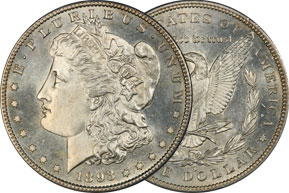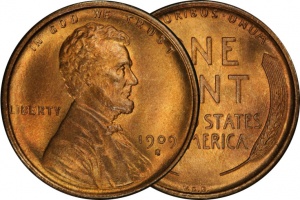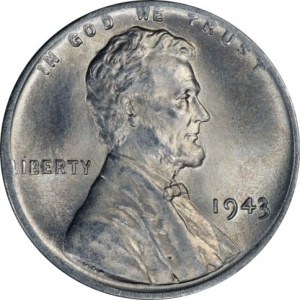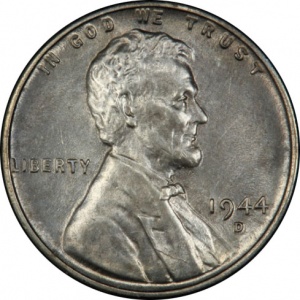A “rare” coin is one of which fewer than 75 exist. A “very rare” coin is one of which fewer than 32 exist (R-5 – R-6). An “extremely rare” coin is one of which fewer than 13 exist (R-6 – R-7). An “almost unique” example of a coin is one of which there are between two and three pieces extant (R-8 – R-9).
Here are two popular numismatic Rarity Scales:
| Bowers’ Universal Rarity Scale | Sheldon Numismatic Rarity Scale |
| URS-1 – unique URS-2 – 2 known URS-3 – 3 or 4 known URS-4 – 5 to 8 known URS-5 – 9 to 16 known URS-6 – 17 to 32 known URS-7 – 33 to 64 known URS-8 – 65 to 125 known URS-9 – 125 to 250 known URS-10 – 251 to 500 known URS-11 – 501 to 1,000 known et cetera… |
R-8: only 1 exists R-7 High: 2 to 3 exist R-7 Low: Extremely Rare, 4 – 12 known R-6: Very Rare, 13 – 30 known R-5: Rare, 31 – 75 known R-4: Very Scarce, 76 – 200 known R-3: Scarce, 201 – 500 known R-2: Uncommon, 501 – 1250 known R-1: Common, 1251+ known |
These scales are used for shorthand to describe how many coins numismatists (coin nerds, like yours truly) believe exist.
What most people mean when they ask the question, “is this coin rare?”, is, “is this coin valuable?” Coins do not have to be rare to be valuable – in fact, some of the most valuable coins are common, but in excellent, and very rare condition.
What Are The ‘Rare’ Coins?
The Most Valuable United States Coins:
1794 Dollar, PCGS MS66+ – $10,000,000+
1933 Double Eagle, Raw – $7,500,000+
1787 Brasher Doubloon, PCGS AU50 – $7,400,000
1804 Proof Eagle, NGC PF64 – $5,000,000
1913 Liberty Nickel, PCGS PR66 – $5,000,000
Note: Many of these coins are unique or single-finest known. Many of them haven’t come to market in over a decade. These prices may be conservative compared to the current market.
Other very rare and valuable coins you may have heard about include the 1894-S Dime and the 1804 Dollar.
If you’re unsure whether your coin is rare or valuable, the Academy of Coins© has created an easy, quick, low-cost grading and valuation service alternative at PriceThatCoin.com.
PriceThatCoin.com is a much faster, less expensive way to find out the value of your toned coin than traditional coin certification. And if you should certify your coin, we’ll tell you!
If you would prefer to learn to understand true numismatic rarity (“rare” in terms of collectible coins), please, read on…
Okay, So What Are ‘Rare’ Coins?
Completely answering that question properly would take tremendous time and space to explain. So let’s look at the characteristics of coins that are valuable and how rarity works in that equation.
Spoiler:
There is not a single Morgan Dollar that is rare, unless you dig into varieties and conditions. Most of the collectible and valuable Lincoln Wheat Cents aren’t rare unless you consider condition.
The smallest mintage of Morgan Dollar is the 1893-S, with only 100,000 minted. Some have been melted through the years. But to be rare according to the numismatic definition, 99,925 would have to be melted. That would leave only 75 or fewer 1893-S Morgan Dollars in the market, but we know there are around 10,000 graded specimens in the marketplace.
The smallest documented mintage of Lincoln What Cent is 484,000 for the 1909-S VDB. Not many have been melted.

What’s a genuine 1893-S Morgan Silver Dollar Worth? Probably a lot. This key date Morgan Dollar has a mintage of 100,000. With about 10,000 pieces graded, it’s not rare. But it’s so heavily collected that an authentic example is worth well over $1000 in low grades and perhaps $1,000,000 in the highest grades.

What’s a 1909-S VDB Lincoln Wheat Centworth ? Could be quite a bit! Even though there were 484,000 minted, many collectors consider it to be the most desirable of all Lincoln Wheat Cents – the most heavily collected coin type on the planet, along with Morgan Dollars.
These coins are not rare. And yet, authentic examples are valuable in all conditions. This is because of supply and demand. That is, they are valuable because there are so many collectors that wish to have them. Even though they’re not rare, there are more collectors willing to spend substantial sums of money than there are coins.
Collectors want the most pristine, untouched example of each coin they can find and afford. This isn’t a made up rule – we see it in auction records going back through history. The nicer the coin, the more collectors will pay for it. And when you have two collectors with a lot of money and they both want the same kind of coin, the one with more money will almost always take the nicer coin. Those with less money usually have to settle for examples that aren’t as nice.
The “Rare” Coin Market You May Not Know About
The coin market is huge and busy, something like the stock market. Each year, hundreds of millions of dollars are spent buying and selling coins in the United States. The global market on its own is nearly as large. As such, it has been dissected and analyzed and turned inside out by many incredibly intelligent people, all out to make a buck.
When you go to a major coin show for the first time, you’ll see how not rare coins are! Valuable coins create a huge industry, and if you don’t know about it you might completely miss it. Like many hobbies, you have to know where to look.
The ‘rare coin’ industry does a few hundred million in revenue annually. It has been this way, adjusting for inflation, going back for over 40 years. As such, almost everything with any kind of value has long been removed from circulation.
The U.S. Mints keeps pushing out coins at a phenomenal rate. As you don’t see Lincoln Wheat Cents in pocket change very often – of which there are literally billions – it’s easy to think they are somehow rare. There are billions of them. Lincoln Wheat Cents are not rare.
Likewise with Uncirculated Morgan Dollars. In the 1970s, the U.S. Treasury released millions that had been stored in bags in vaults, to collectors. They’re not rare either. And worn ones were used in casinos for a very long time, up until the early 1960s.
But there is a magical phenomena – a tipping point. There have to be a certain number of objects in a collectible category for them to be popularly collected – for them to catch on. That certain number needs to be just slightly less than the number of people interested in collecting them. As coin collecting has a massive history going back to at least the 1850s in the United States, coins are way past that tipping point.
Conditional Rarities
As such, condition is very important! There are certainly die varieties (called VAMs) of Morgan Dollar that are rare, and there are certainly conditional rarities of every Morgan Dollar date and mint mark. Likewise, there are certainly varieties of Lincoln Wheat and conditional rarities of all of years and mint marks.
Let’s look at our 1893-S Morgan Dollar. There are sufficient collectors in the world willing to pay for an authentic 1893-S that even in low grade, collectors must pay over $1000 for this silver dollar made with $16 worth of silver. There are over 10,000 1893-S Morgan Silver Dollars graded by major Third Party Grading companies at this time. Not rare. But there are fewer than 40 graded in Mint State – certainly rare. That means the 1893-S in Mint State is a conditional rarity. And there are just a couple in the world graded Mint State 67, making them conditionally almost unique. And it’s for that reason that an 1893-S Morgan Silver Dollar graded Mint State 67 might demand over $1 million from a winning bidder at auction. Coin collectors with bank accounts to back up their collections always want the best.
When we look at Lincoln Wheat Cents, we see a similar story. A coin that is not rare at all but is heavily collected is the 1909-S VDB. None but the absolute finest in the world can be considered remotely numismatically rare, and yet there are so many collectors for these coins, they’re still quite expensive. Again, this results from supply and demand. Only when you get to the lofty condition of Mint State 67 Red are these truly rare, and that’s speaking in terms of conditional rarity. There are 30 or fewer in MS-67 Red or finer, one or two in Red-Brown, and one or two in MS-67 Brown. A 1909-S VDB in MS-67-RD recently sold for only $62,000, and that seems like a good buy to a lot of serious collectors.
There are substantial premiums for finest-known examples, and even greater premiums for single-finest known examples. When you have five examples of 1893-S Morgan Silver Dollar that grade Mint State 65 and none graded finer, you have five finest-known examples. In the case of the 1893-S Morgan Dollar, there are actually two graded Mint State 67, so a coin grading Mint State 65 is not the finest-known. If one of the Mint State 67 coins were to regrade as a Mint State 68 by one of the major TPGs, that coin would be the single-finest-known example of 1893-S Morgan Silver Dollar. It’s value would then be much higher than the Mint State 67. The value of the Mint State 65s in our example may not be impacted substantially.
How Die-Life and the Coin Production Process Contribute to Conditional Rarity
Simply speaking, the nicer a vintage coin is, the tougher it is to find. Modern coins are expected to be phenomenal. In fact, when you have one that grades lower than Mint State 69 straight from the Mint, it’s an oddity. (No, unfortunately that doesn’t make it worth more!)
Again, when you examine coin auction records going through history, there is a definite and obvious trend: the nicer the coin, the more it demands. And it’s obvious why – coin collectors want a flawless collection. They want their collection to be THE example for all coin collections.
In the minting process, a coin blank (or planchet) is fed between two dies, struck, and spit out the other side from some height into a pile of similar coins. Then the coins are assembled into a roll or bag, where they’re stored until shipped out to banks. The result is the coins nearer the bottom of the bag tend to have more marks and scratches while the ones at the top of the bag usually have fewer.
Similarly, when the dies and minting presses are freshly made and calibrated, the coins are more fully struck. The better the strike, the more detail showing all over the coin. After dies wear a bit, they have to be polished. As a die is polished, the fields get ever so slightly larger and deeper and fields creep further into the edges of the design devices. This allows more metal to stand on the fields of the coin, which means less is pushed into the design’s deepest points.
At the beginning of a die’s life, the amount of unstruck material – the metal that somehow doesn’t make it all the way into the dies nooks – is tiny and hardly noticeable. But after the die is used so much that it requires polishing, the cumulative layers of metal removed by the die polishing process add up. Eventually, the coins are not struck fully, and it’s quite easy to notice. Strike is so important that the grading companies sometimes note fully struck coins along with the coin’s grade, and track separate populations for these fully struck coins.
Wear, strike and marks all factor in to a coin’s grade. The grade is a numeric shorthand representation of his nice the coin is. And, as explained before, the higher the grade, historically, the higher the price.
So what coin collectors seek are coins 1) made with fresh dies (the most detail present – and the best strike), and 2) from the top of the pile – those with the least marks disturbing their view of the design.
And these are difficult to find! The best struck coins, from the best, freshest dies, on the most recently calibrated coin presses, are usually the ones on the bottom of the pile – those all dinged up from the later coins falling on them.
The coins at the top of the pile, those with the fewest marks and scratches, are the same ones made from slightly worn and dies and perhaps slightly less powerful coin presses.
All of this leads to Conditional Rarity.
Typically, the lowest grades are extremely common, while the highest grades are extremely scarce – even rare. Tens of thousands of collectors, many with substantial sums of money to spend, create demand. These coin collectors drive up the prices on these precious few conditionally rare coins as they vie to assemble the finest examples of each coin for their collection.
Varietal Rarities
Every coin made, much like a snowflake, is unique. There may be some that look identical to the naked eye, but on the molecular level, the metal never moves exactly the same way in the heat and pressure of a tremendous die strike.
But then there are sometimes differences visible to the naked eye, particularly in older coins. One die might be scratched by a die maker, or a letter or number may be slightly out of alignment. These are die varieties, and there are so many coin collectors that the really serious coin collectors sometimes collect coins by die variety.
First, let’s look at a couple of rare VAM varieties of Morgan Dollar. Leroy Van Allen and A. George Marris wrote the book on Morgan Dollar die varieties, and numbered those varieties by “Van Allen Marris Numbers” or VAM Numbers. Some VAMS are collected more than others. The most easily visible varieties are usually the most heavily collected. Just because you have a rare VAM, it may not be valuable if many people aren’t collecting that obscure or difficult-to-see variety. There are a HUGE number of Morgan Dollar collectors, but there are a very small number of Morgan collectors trying to assemble a complete set including all of the thousands of VAM varieties. Some of the more obvious die varieties have been given their own, smaller sub-sets, like the “Top 100” or the “Hit List 50” that many more collectors attempt.
A quick word of warning: even when you are very experienced at searching for varieties, it is easy to see things you wish to see rather than what is really there! Don’t worry, it’s human nature, and with practice comes better understanding.

What’s an authentic 1888-O Scarface Silver Dollar Worth? This varietal rarity could be worth a lot as it’s heavily collected and there are fewer than 20 pieces grading Mint State 63 or higher.
A rare VAM that is heavily collected is the 1888-O “Scarface” Morgan Dollar, 1888-O VAM-1B. As you can see, what makes the coin interesting to numismatists is quite prominent. Collectors can easily differentiate a standard, non-variety coin from the variety example without magnification. In the case of this 1888-O VAM-1B, there’s a giant die crack across Liberty’s cheek that looks like a massive scar. A coin like this recently sold for over $5,000 graded Mint State 63, whereas standard 1888-O Morgan Silver Dollars graded Mint State 63 (estimated 20,000 or more 1888-O Morgan Silver Dollars graded at this level) routinely sell for $60 to $75. What’s the reason the Scarface 1888-O is worth nearly ten times as much in the same grade? There are fewer than 40 Scarface 1888-O Morgan Silver Dollars grade Mint State 63 or higher.
Here’s a different example: a rare VAM that is not heavily collected. Let’s look at the 1879-S Morgan Silver Dollar with a Reverse of 1878. This is a common die variety, so common, it was a well-known variety long before Van Allen and Marris catalogued their findings. But the VAM-34B, a sub-variety of the Reverse of 1878, is not common. Collectors of VAMs know about fewer than 20 examples of VAM-34B. The problem is that you can detect the VAM-34B die markers only with heavy magnification. It’s still fascinating to comprehend how these differences happened.
If this kind of thing – the devil in the details – are what you’re interested in, you’re in luck! You can collect these to your heart’s content without going broke. Or, at least as broke as you would if you liked the expensive stuff. This coin doesn’t trade very often, but one graded AU-58 recently sold for $750. A standard 1879-S Morgan Silver Dollar, Reverse of 1878 grading AU-58 sells for between $100 and $200. A standard 1879-S Morgan graded AU-58 sells for $30 to $40.
So even though this is 1879-S VAM-34B a very rare VAM variety, it’s not as popular with collectors as the 1888-O Scarface. And another point is – you might think I’m joking, but I’m not: It might have something to do with the cool name.

What’s an authentic 1943 Steel Lincoln Wheat Cent Worth? Likely not much – with a mintage of over 84 million pieces, it’s very common in all grades up to and including Mint State 67.

What’s a genuine 1944-D Steel Lincoln Wheat worth? A lot! There are only 7 known in the world, making it a supreme varietal rarity!
Here’s another varietal rarity for you, but this time a Lincoln that is truly rare: the trial 1944-D in zinc-coated steel. In 1943, the United States Mints collectively created over 700 million silvery colored cents, made with steel planchets coated in zinc. These are not rare. But in 1944, after the blanks were to have been used up, a few made it out of the Mints in error: 30 from Philadelphia and just seven from Denver.
If you think you have one of these, you should definitely have a numismatic professional check it out for you. Again, 1943 Steel Wheats are extremely common. And there are MANY 1944-D fakes out there because they’re relatively easy to make and they’re quite expensive in any grade.
But most coins aren’t rare. Some are just very, very, VERY collected.
Next: Coin Condition 1: Grade – How Fineness Plays Into Price
